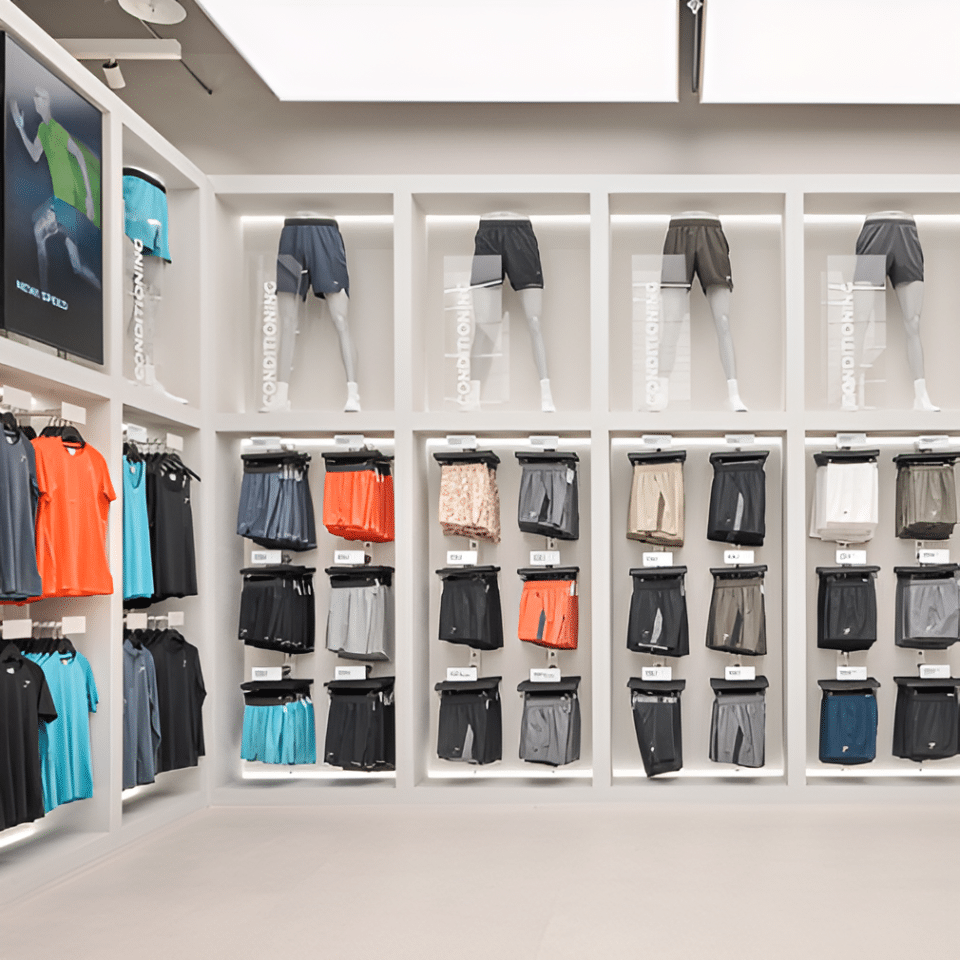Well integrated: DSYNC on cracking the problem of connecting legacy systems
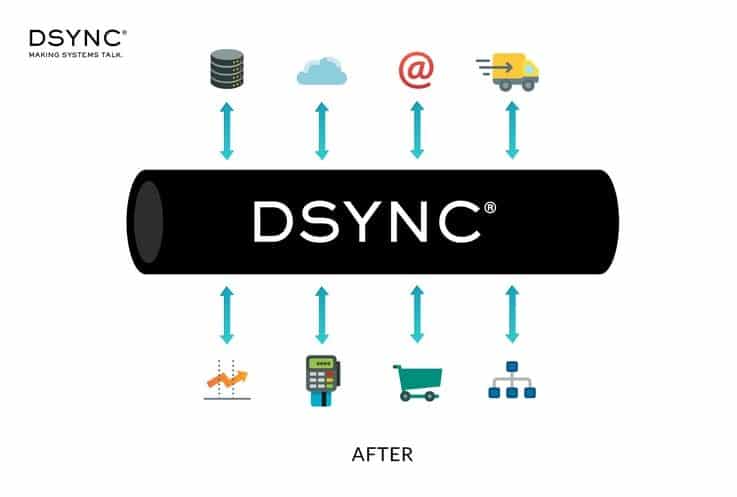
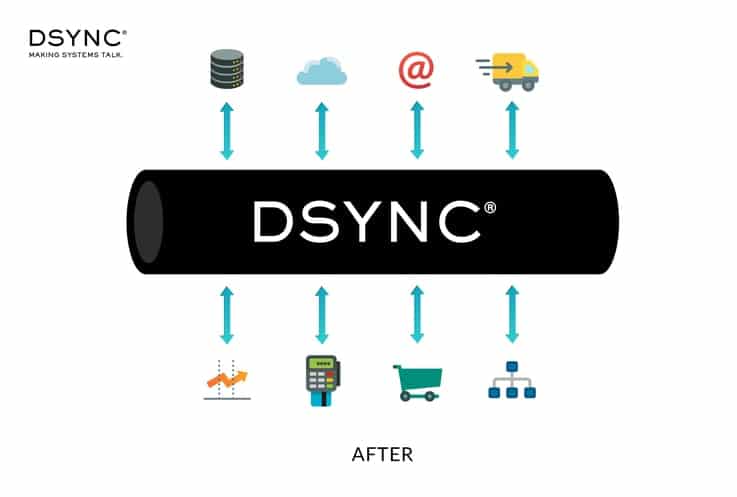
DSYNC’s description of itself as ‘making systems talk’ is an accurate one. The company is helping retail crack one of its longest-running challenges – connecting up legacy systems. But it’s also helping them bring in new tools as well without great integration expense.
With so many different systems out there and pieces of software at work in the retail ecosystem, retailers want to be able to pick the best bits of everything – and for them to work together. DSYNC provides the means to link them together and ‘transform data’ between systems.
Co-founder and COO Simon Church explains how the platform works, what greater levels of integration and insight can achieve and how education is the biggest hurdle to tackle:
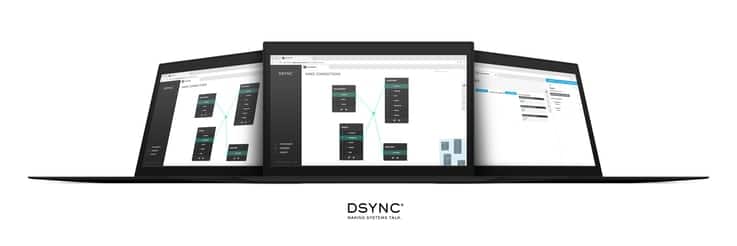
Can you give us some insight into what DSYNC does?
There’s so many people that have found the best of breed software, and unfortunately, a lot of the best of breed software doesn’t connect to the other best of breed software, so people are finding themselves with disparate systems. We’re the invisible glue that binds it all together in the background.
For retailers, we find are actually coming to us through our partners, so most of them are introduced to us by their incumbent software provider. It’s a nice position to be in that we don’t actively have to go out and try to find clients. We actually align ourselves with the point of sales system, or the website shopping cart, or the inventory system. These are the guys that say, “You should have a chat with DSYNC. They might be able to glue you guys together with us.”
There’s always been middleware and people that will glue one thing to another, but there hasn’t really been one that can glue multiple things together. Say you update one system with an address change, you can update all the other systems from email, loyalty and inventory, and you don’t even have to maintain that middleware.
That’s a big thing. If you do get someone to write middleware from one system to another, you’ve got to keep that person around to maintain that, which is tricky to do.
Who are your target customers?
We target from the middle. The alternatives to us in the market are very expensive, so we realised there was nothing out there for the small guys right up to the middle tier that can help people to do this in an effective manner.
Our biggest client is a massive $8 billion bank, so we always preface that by saying that we’re able to deal from an enterprise level, but we also have the capabilities to hit around the midmarket. A lot of the customers that we’ve been picking up are the ones that have got five stores up to 100 stores.
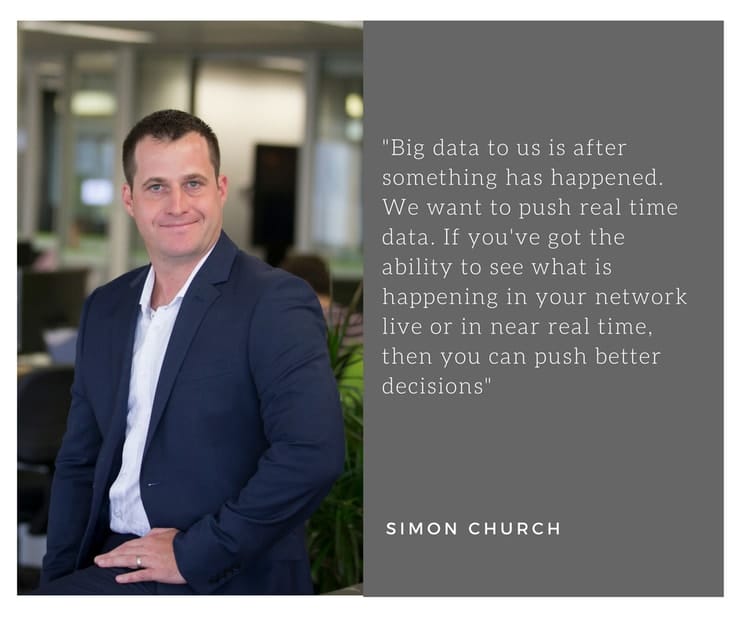
How do you connect up these different data sources effortlessly?
Instead of people having to do a lot of coding, we’ve made it all about configuration. Inside our dashboard we have what we call our data mapping centre, and instead of people having to code one thing to another, each data element comes up as actual items. For example, it might be customer full name. You can then say “Okay, I would like to match our first name and our last name together” with another system and just drag and drop. It’s all configurable.
A lot of the platforms offer a connector within the platform, but that connector will be a one-to-one connection so for that platform to another platform. I think that actually smart retailers get that they can utilise multiple systems and so instead of having a one-to-one connector, the biggest win is that we can update as many systems as you like. We have unlimited connections in our systems, so we don’t mind if someone wants to connect one system to one system or one system to 60 systems. The capabilities are unlimited.
We don’t pretend to be the expert in going out there and cleansing data, but we do make it easier for people to transform data. One example is in the UK the date format is day/month/year, but if you’re integrating with an American point of sale system and you need to convert that data over to month/day/year, our system can automatically transform that data on the fly and then put it to the right endpoint. But not just for one system, you can do it to multiple systems. Say you’re connecting an American point of sale system with an English inventory system with another English website platform, we can actually twist and bend the data on the move so that it can update multiple systems at the same time.
There are a million products out there that will do data cleansing and talk about big data, but big data to us is after something has happened. We want to push real time data. If you’ve got the ability to see what is happening in your network live or in near real time, then you can push better decisions like location-based inventory. If you know where stock is, you can give better advice to your customer.
We always go through and say, “Okay, what’s one of the most common questions that a retailer is asked?” And that is, “Is it available in this colour, in this size, in the store, at this location, at this time?” A lot of people don’t know, and they guess it and that’s really bad. But if you’re pinging data from an inventory system, a website system, a sales channel, a point of sales system, then you’ll have a better idea about where your stock actually is and then you can push better decisions like shipping it from the store or collecting it from the store.
Or you might even get a loyalty thing, which is where it’s not in stock, you might want to say, “Okay, I’ve seen in the past you bought this, therefore there is an upsell opportunity.” So if you’ve got real data at your fingertips, you can have a better idea about what’s actually happening in your network.
How accurate would you say the system is in terms of percentage?
I don’t think that it will ever be 100%, as in it’s always down to people doing the right thing. There’s always going to be human error and things like that in different systems that aren’t updated at the right time and things like that. We are the glue, so we’re also dependent on the right things happening on the other side of the system.
I don’t think you will ever get absolutely perfect control, but it will be better. If you think about some of the ways that we used to do things, a lot of people are still doing uploads from CSV or manually entering information into spreadsheets and uploading them. We see a lot of people doing hybrid integration, and they might be doing drop shipping and sending things directly from the wholesale, and they might get an XML feed or CSV feed that is imported into the system.
Suppliers are often still doing things the old-school way where we can help them to automate the CSV feed and map the data into the right sections, so that it can help the actual retailer rather than having to get an email, download something, upload it.
Do you think other ways of doing this, like NFC, are a bit of a red herring?
We could actually work with those ones as well, so if you combine a system like ours with theirs, then you would have an even better understanding. The NFC can then talk directly to CRMs. Another interesting point is bidirectional activities. If you have a NFC device that’s scanning the different items, you can push and pull data in both directions. That’s a win-win situation. I think combining NFC with all of your other platforms and integrating everything together is the way to go.
The more visibility the better. It comes down to the right processes and the right control, so you’ve got different tools out there, different CRM systems, different inventory systems, different sales networks and they all need to talk to each other, so what it comes down to is getting that right glue and also making sure that the process flows right.
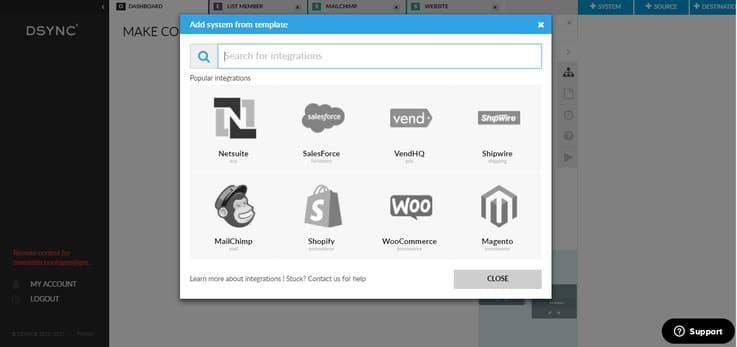
Are there any limitations to the system?
There are some systems that are very old. We integrate a lot of accounting systems, because that’s one of the key things that people don’t like to re-enter things from one platform into another, and accountants need to have things done the right way.
Looking back 10 years, you would have a lot of desktop accounting platforms where the software is downloaded onto the accountant’s device or computers. However, there’s a huge move now to cloud-driven accounting – if you have a look at the traction that cloud-based accounting has got, it’s phenomenal.
Where we see a lot of challenge is that there still a lot of old school desktop-driven accountants. They are moving slowly, but that would be a limitation that we are commonly asked “can you integrate with them?” To be honest, we’re not going to put our engineer’s resources onto a platform that’s not going to be there in 10 years’ time, or supported even. There’s a really quick uptake in the cloud accounting, and so therefore I don’t want to get backwards in building assets to support desktop versions. We’ve actually seen a big turn in the architecture that a lot of the more common cloud platforms are built on in using the same sort of architecture that is easier to integrate now, so it’s a good thing for us.
Is there a reason why big retailers aren’t signing up faster for these types of services?
There’s so many customers that we’d love to have. People are not integrating systems for two reasons – one, they believe it’s costly to implement and two they believe that the time to implement is a long time. But we can actually deploy our integration in a very short period of time, and if we can deploy our systems in a very quick time, it reduces the risk of something going wrong operationally. I think it’s an educational thing.
Are you doing anything to address that?
Absolutely. We’re putting so many educational materials on our website, from videos to technical help. – things to give people, and also IT managers and developers, the tools they need to do things quickly.
We use Zendesk for our help desk, and the amount of self-help material is rapidly expanding every day. One of the things we do that is every time that we get asked a question, we then have a policy internally to turn that into a frequently asked question. We believe if we can help everyone or teach everyone to fish that’s good.
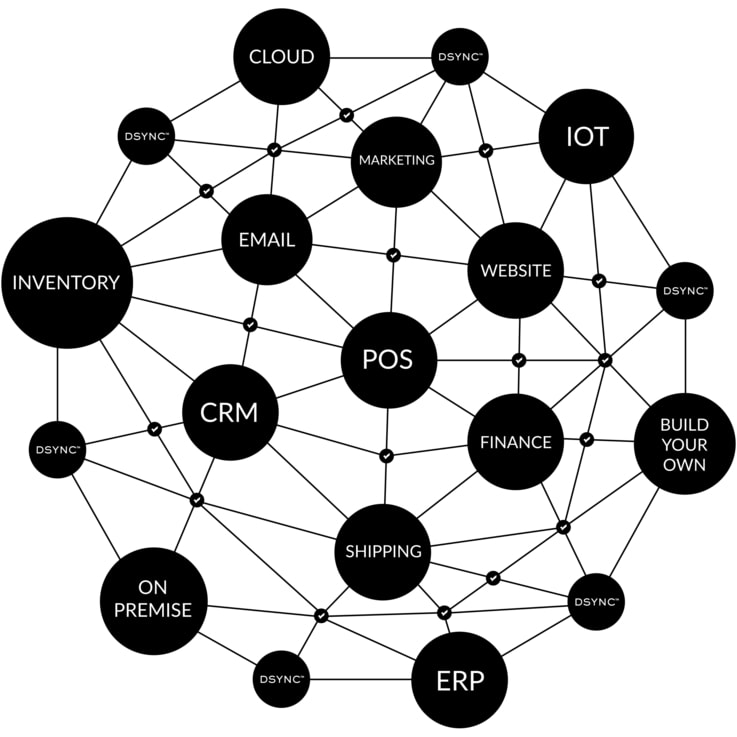
What would you say are the biggest pain points that your system can help a retailer tackle?
I think it reduces the manual handling. Rather than people manually keystroking in, and given the time it takes for someone to sit down and manually enter things in, it’s always done at a later stage when they can be bothered to do it. If you can automate those processes, one you’re reducing the time to actually keystroke things in, and two you get better visibility right there and then.
Can you tell me any more about the new level of insight that people are getting from this data?
One client has a 34-year-old legacy system, and for three decades it was an internal myth between the 90 developers that they’ve got in the company that this particular system could not communicate effectively with all of the new tools that were out there. For 34 years, they had limited ability to connect with their main system. They can actually connect into it individually and do one integration after the other integration, after the other integration; however, that’s extremely costly to do.
The way that we positioned our platform is like an integration layer, like a piece of foam that sits on top of the legacy system. Because foam is installed once on top of this rusty old system, it means that the new tools can be very rapidly put on top and tested on top of the system at a lower cost and a faster way. That’s one of the myths that we have destroyed is that these old legacy systems, yes they are hard to integrate with but once you’ve installed DSYNC, then it becomes extremely easy to deploy as many thing on top as you like.
If you’re one of those new cool start-ups, you’re always going to pick the newest and the latest technology, and so you’ve got to be able to link your old system to the new cool stuff. We see DSYNC as being the integration to be able to help these companies to expand and join old stuff to new stuff and new stuff to the new stuff as well.
We talk to them customers about what is their ideal process flow. Where is your source of truth? Do your customer service agents spend time on their CRM and does that CRM need to be fed data from the sales guys? Do they need to be fed data from the shipping teams? Does it need to be integrated into accounting systems? We talk to people about the flow of the business and working out who does what and what needs to be updated at what time.
It saves the customer from building things natively themselves. If they build an app and they build one integration into our platform, it instantly gives them access to everything that’s already connected on our system and will be built in the future.
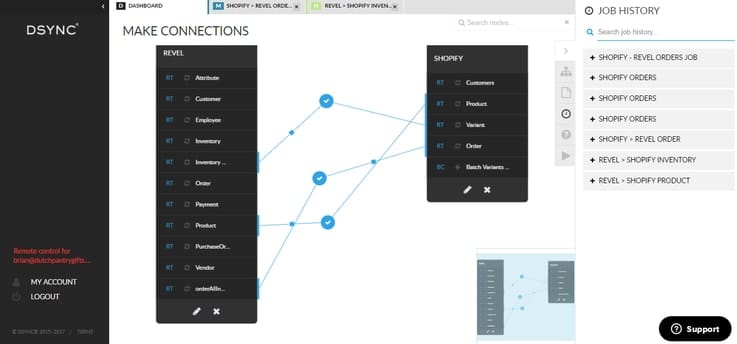
What big developments are ahead for you? What new functionality are you working on?
I’m pretty excited about point of sale at the moment and helping retailers with point of sale integration. One of the recent partnerships that we’ve made is with Revel Systems, the iPad point of sale system. The traditional point of sale system is old and hard to maintain. The Revel System is iPad-driven, so very quick to deploy to cafes, bars, restaurants, hostels, hotels and all sorts of different places. I see that is a really exciting market because if you can connect your point of sale system to your inventory and website accounting system, those are the core functions that businesses rely on.
We’ve also been working on some of the large multinationals as well. We’ve actually got clients now in Asia, in Africa, in Europe, US, Canada, and Australia. We’ve seen some pretty strong cross-border growth.
Do you have any thoughts about how the retail industry is going to change and therefore how the platform might need to change or adapt as a result?
This year I see a lot of people talking about AI and chatbots and things like that. It’s interesting to see how every year there seems to be a different flavour in the market. Traditionally, there’s always been the fundamentals, there’s going to be different systems that offer the best of breed things.
My focus right now is just on connectivity, and no matter what the next flavour of the month is or year is we want to be able to connect that into all of the existing network.
Are there any other complementary systems or partners who have really impressed you recently?
I’ve seen the growth of Shopify from a system that was traditionally taking on small to medium businesses, so one-to-two store type, easy to set-up, low cost website shopping cart, but if you look closely at the amount of clients that have joined up with Shopify, they’re actually now going aggressively upstream into Shopify Plus, which is the area that is taking on the midmarket to enterprise.
Shopify has been making some really aggressive good moves from SMB right up to enterprise, and it’s working. I’m excited to see some healthy competition in that area. If the enterprise partners are all supporting Shopify Plus, then that is what we drive the market, because people will ask what they recommend and they will say ‘these are your choices’.
Find out about how else tech is changing retail with these top 50 retail tech startups.
Watch this space for more interviews, retail openings and retail innovations. You can also follow us on Twitter, Facebook or check out our LinkedIn page. See you soon!
Images courtesy of DSYNC



